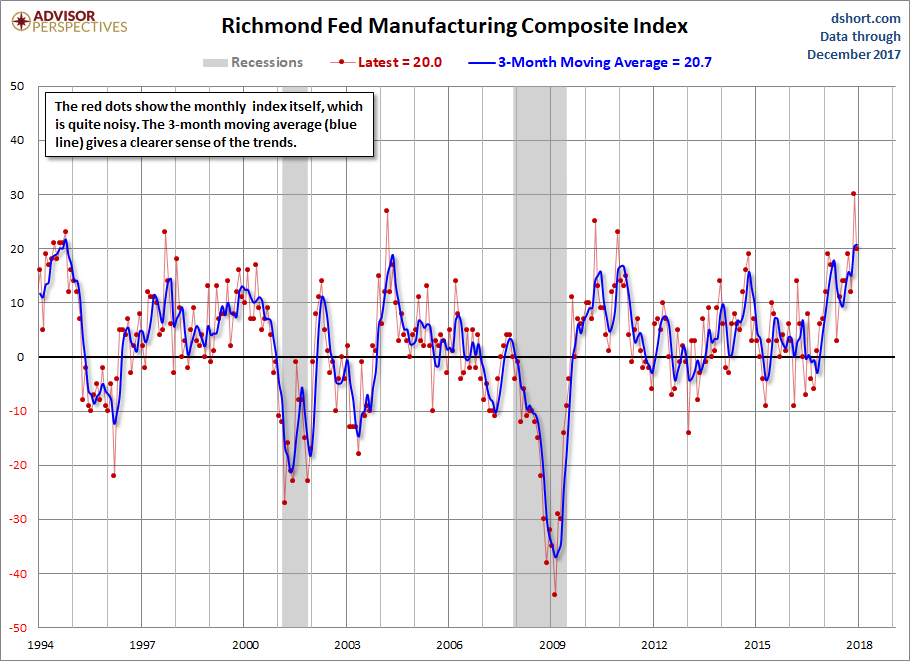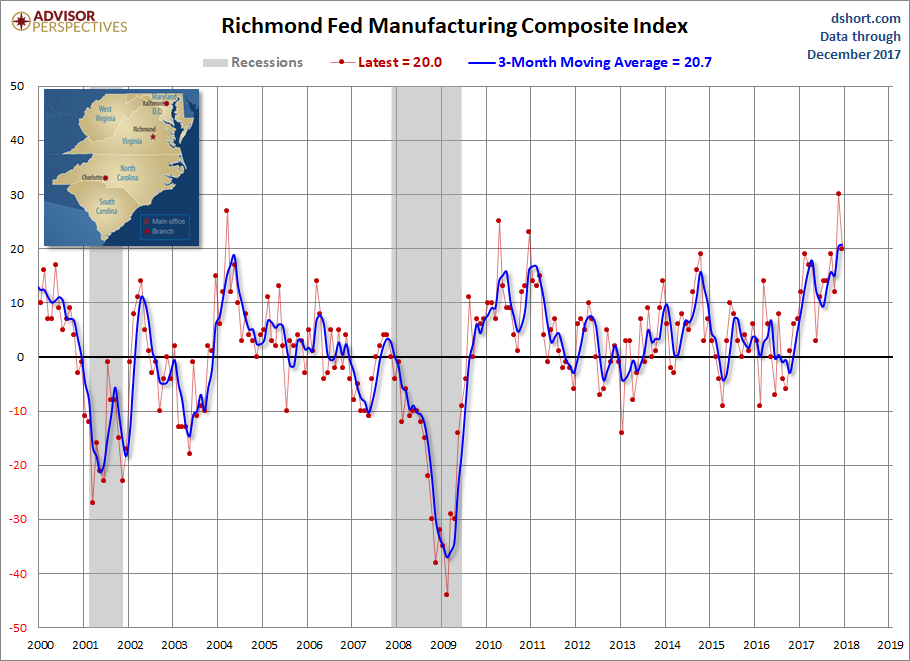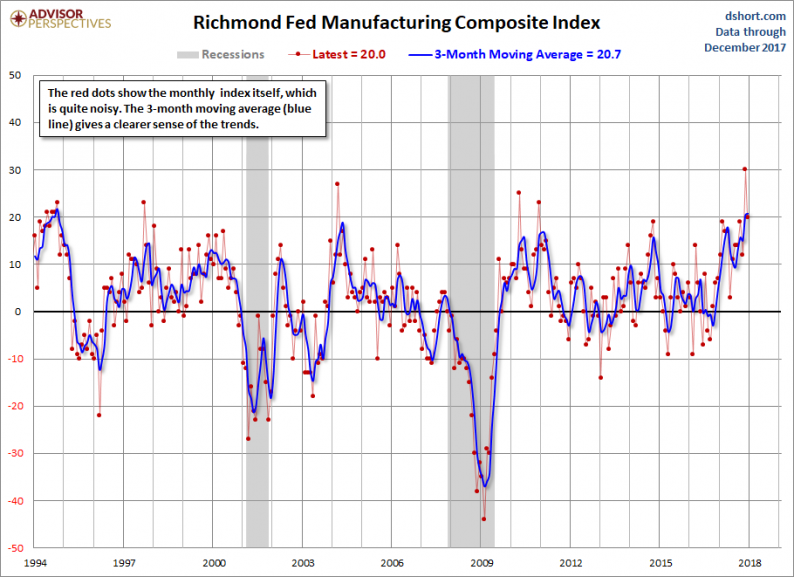Today the Richmond Fed Manufacturing Composite Index was at 20 for the month of December, down from last month’s 30. Investing.com had forecast 22. Because of the highly volatile nature of this index, we include a 3-month moving average to facilitate the identification of trends, now at 20.7, which indicates expansion. The complete data series behind today’s Richmond Fed manufacturing report, which dates from November 1993, is available here.
Here is a snapshot of the complete Richmond Fed Manufacturing Composite series.

Here is the latest Richmond Fed manufacturing overview.
According to the latest survey by the Federal Reserve Bank of Richmond, Fifth District manufacturing firms saw moderate growth in December. The composite index moved down from its record high November reading of 30 to 20 but remained positive, indicating continued growth. The decrease in the composite index resulted from declines in the indexes for shipments and new orders; but the third component, employment, increased in December. Indicators of wages and inventories also rose. While most other indicators of current conditions moved lower, they remained positive with the exception of the index for backlog of orders, which fell from 21 to ?4.
Manufacturing firms remained optimistic, as all expectations indicators increased except for vendor lead time, which dipped from 10 to 7.
District manufacturing firms reported continued price growth in December, although this growth slowed in both prices paid and prices received. However, firms expected an increase in price growth in the coming six months. Link to Report
Here is a somewhat closer look at the index since the turn of the century.

Is today’s Richmond composite a clue of what to expect in the next PMI composite? We’ll find out when the next ISM Manufacturing survey is released (below).













Leave A Comment